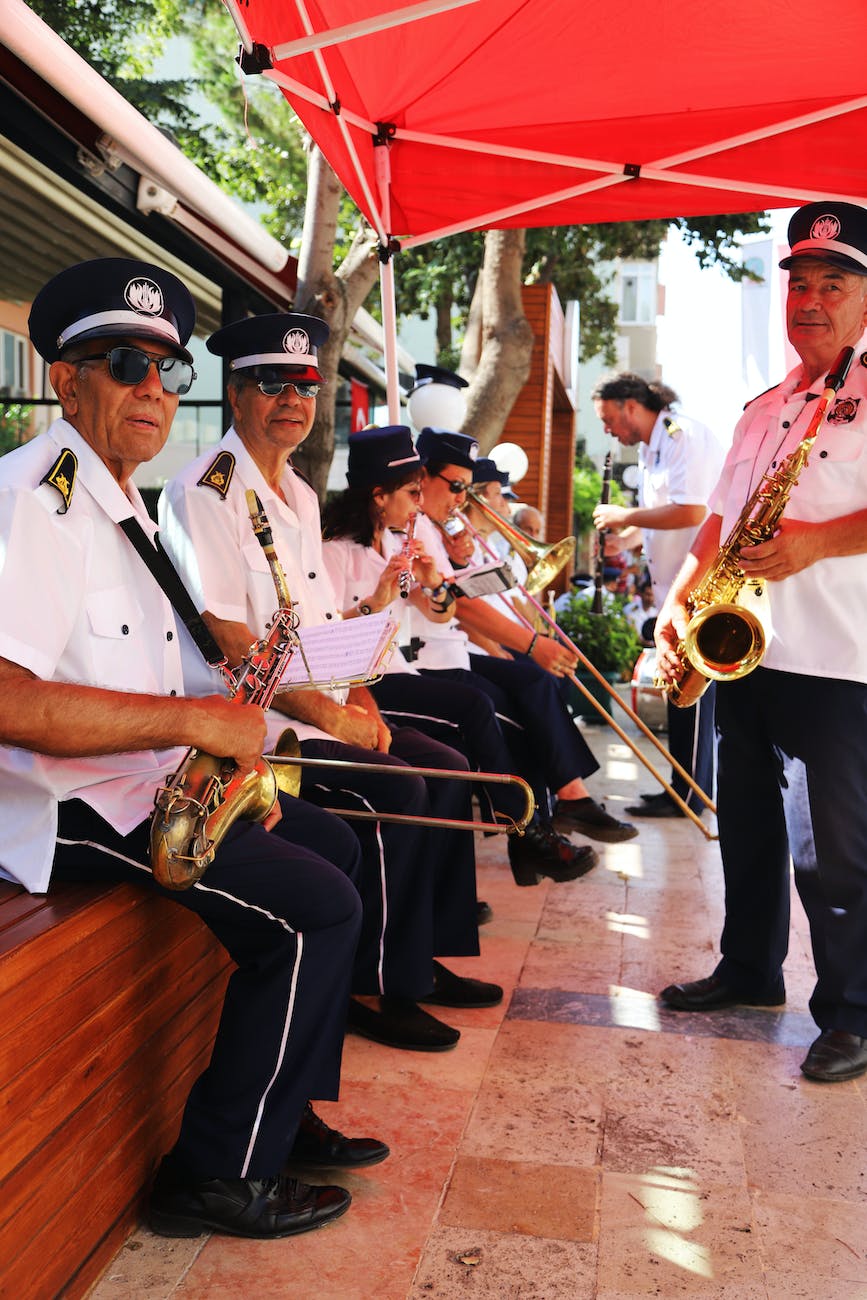Table of Contents
Welcome to the fascinating world of professional wind ensembles, where the harmonious blend of wind instruments creates a mesmerizing symphony of sound. An ensemble, in music, refers to a group of musicians who perform together. A wind ensemble, specifically, is a type of musical group that consists entirely of wind instruments, such as woodwinds, brass, and occasionally percussion.
The Definition of Professional Wind Ensembles
What is an Ensemble?
An ensemble is a group of musicians who perform together, complementing each other’s skills and talents to create a coherent and melodious performance. In the context of music, an ensemble can consist of various types of instruments, such as strings, brass, woodwinds, or in the case of wind ensembles, primarily wind instruments.
What is a Wind Ensemble?
A wind ensemble is a specific type of musical ensemble that primarily features wind instruments, including brass, woodwinds, and sometimes percussion. Unlike an orchestra or concert band, which often incorporates string instruments, a wind ensemble focuses solely on wind instruments, creating a distinct sound and musical texture.
The Distinction Between Orchestra and Concert Band
While wind ensembles, orchestras, and concert bands share similarities in terms of being musical ensembles, they differ in their instrumentation and repertoire. An orchestra typically consists of a wide range of instruments, including strings, woodwinds, brass, and percussion. It is often associated with classical music and performs symphonies and other orchestral works. On the other hand, a concert band or wind band focuses on wind instruments and performs a diverse range of music, including marches, concertos, and contemporary compositions.
History and Development of Wind Ensembles
Origins of Wind Ensembles
The origins of wind ensembles can be traced back to ancient civilizations, where wind instruments played a vital role in religious ceremonies and military events. In ancient Greece, for example, wind instruments such as the aulos and the syrinx were used in various musical performances. These early wind ensembles laid the foundation for the development of wind music and the eventual establishment of wind ensembles as we know them today.
Evolution of Wind Ensembles
Throughout history, wind ensembles underwent significant evolution and transformation. The emergence of polyphonic music in the Renaissance period saw the inclusion of wind instruments in ensemble compositions. The growth of wind ensembles continued during the Baroque and Classical eras, with composers such as Bach and Mozart incorporating wind instruments in their orchestral works. However, it was during the Romantic era that wind ensembles gained prominence as independent musical groups, with the rise of community bands and military bands.

Influential Professional Wind Ensembles
Several professional wind ensembles have made a significant impact on the development and recognition of wind music. One notable ensemble is the Tokyo Kosei Wind Orchestra, known for their exceptional musicianship and breathtaking performances. Another influential ensemble is the Dallas Wind Symphony, founded by renowned conductor Frederick Fennell. These professional wind ensembles have pushed the boundaries of wind music, showcasing the virtuosity and versatility of wind instruments.
Instrumentation and Repertoire
Instrumentation in Wind Ensembles
Wind ensembles have a diverse instrumentation that includes woodwinds, brass, and occasionally percussion instruments. Woodwinds commonly found in wind ensembles include flutes, oboes, clarinets, and bassoons. Brass instruments such as trumpets, trombones, baritones, and French horns bring a rich and powerful sound to the ensemble. Percussion instruments, including timpani, snare drums, and cymbals, add rhythmic complexity and accents to the overall performance.
Some wind ensembles also include string bass but that isn’t too common, especially in high school bands.
Repertoire of Wind Ensembles
The repertoire of wind ensembles is vast and encompasses a wide range of musical genres and styles. From traditional marches and overtures to contemporary compositions and symphonic transcriptions, wind ensembles have a diverse selection of music to choose from. Notable composers who have written for wind ensembles include Gustav Holst, John Philip Sousa, John Mackey, and Leonard Bernstein. Additionally, wind ensembles often perform new music, commissioning works from contemporary composers to expand the boundaries of wind ensemble music.
Examples of Notable Wind Ensemble Pieces
Wind ensembles have a rich repertoire of notable pieces that have become masterpieces of wind ensemble music. One such piece is Gustav Holst’s “First Suite in E-flat for Military Band,” a quintessential work in the wind ensemble repertoire. Another iconic composition is Frank Ticheli’s “Blue Shades,” a dynamic and compelling piece that showcases the versatility of wind instruments. The Eastman Wind Ensemble’s recording of these and other exceptional works has contributed to the recognition and appreciation of wind ensemble music.
Famous Professional Wind Ensembles
When it comes to professional bands, there are several renowned groups that have made a significant impact in the music world. One such ensemble is the Tokyo Kosei Wind Orchestra, known for their exceptional musicianship and breathtaking performances. Founded in 1960, this Japanese ensemble has gained international recognition for their precision and artistry. Another notable ensemble is the Eastman Wind Ensemble, hailing from the Eastman School of Music in the United States. Under the direction of prominent conductors, the Eastman Wind Ensemble has consistently pushed the boundaries of wind ensemble music.
Aside from the Tokyo Kosei Wind Orchestra and the Eastman Wind Ensemble, there are other professional wind orchestras that have left their mark on the music scene. The Dallas Wind Symphony, founded by legendary conductor Frederick Fennell, is known for their impeccable recordings and captivating live performances. With a focus on contemporary wind ensemble repertoire, this ensemble has become a beacon of innovation in the wind music world. Other notable professional wind orchestras include the North Texas Wind Symphony, the United States Marine Band, and the United States Army Field Band.
Modern Wind Ensembles and Future Trends
While professional wind ensembles have a rich history and prestigious reputation, they continue to evolve and adapt to the ever-changing music landscape. In recent years, there have been several contemporary innovations in wind ensembles that have expanded the possibilities of this genre. Composers have been exploring different styles and genres, incorporating elements of jazz, rock, and world music into wind ensemble compositions. This infusion of new sounds and influences has brought a fresh and dynamic energy to the wind ensemble repertoire.
Conclusion
Collaborations and crossovers have also become a prominent trend in the world of wind ensembles. Musicians from different genres and backgrounds are coming together to create unique and boundary-pushing collaborations. Wind ensembles have been partnering with vocalists, contemporary dance companies, and even electronic artists to create immersive and interdisciplinary performances. These collaborations not only attract new audiences but also challenge the traditional perceptions of wind ensemble music.
Related Articles
Finding The Best Music Production Laptop
Breve Music Studios publishes music to Spotify, YouTube Music, Amazon Music and more. Follow our pages on Facebook, Instagram, Twitter, TikTok, and YouTube.
Listen to our ensembles: Breve Orchestra, Breve Music Ensemble, Breve Low Brass Ensemble, Breve Woodwind Ensemble, and Jermaine Harris on Spotify.
